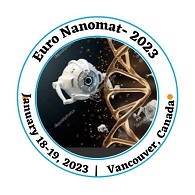
Ganesh Gollavelli
Jawaharlal Nehru Technological University, India
Title: Graphene Phototheranostics for Cancer and Bacterial Ablation
Biography
Biography: Ganesh Gollavelli
Abstract
The development of nanotechnology and nanomedicine is expected to address numerous medical problems, particularly those related to cancer and infectious diseases, which are among the top five most lethal diseases in the world. The elimination of these issues by precise diagnosis and treatments is of major concern. When compared to more conventional therapeutic approaches like radiation therapy, chemotherapy, and surgery, near infrared mediated phototherapy is a non-invasive strategy utilized to infiltrate many chronic cancers and bacterial infections with minimal inflammation. For a better understanding of this area of study, I would like to share the most recent research on graphene phototheranostics here.1 Besides; I would like to explore my research work based on multifunctional grapheme (MFG) for diagnosis and phototherapy of cancer and bacteria. The MFG has synthesized to fulfill the idle characteristics of the theranostic probe, which could provide the multiple diagnosis and therapy with a single and minimal dosage within a short time. In order to prepare the MFG we adopted Hummers method and microwave followed by sonication to produce graphene oxide (GO), magnetic grapheme (MG) and MFG. The prepared MFG has a good magnetic and photoluminescence property. The fluorescent probe and the photosensitizers has functionalized by following covalent and noncovalent approaches. The well functionalized MFG has very good absorption in entire biological window (650-1300nm).2 To explore the outstanding features of the MFG, we have studied its biocompatibility in vitro and in vivo by using HeLa cells, zebrafish and mice. The experimental results have shown that the MFG is biocompatible and excellent luminescence inside the HeLa cells as well as in the zebrafish and mice. Apart from this we have explored its magnetic property for MRI imaging and provided very good concentration dependent contrast than clinically approved resovist. Interestingly, the broad absorption of MFG has given very good heat absorption curve while irradiation with 808 nm and 1064 nm NIR Lasers. Hence, we demonstrated its photothermal capability. The MFG was given very good results of photo in activation of cancer. It was confirmed by the HSP60 expression experiments.3 Apart from this the MFG has functionalized with SiNc4 a photo sensitizer which can generate the singlet oxygen upon irradiation of NIR light. The O1 generation character of MFG-SiNc4 has evaluated with singlet oxygen sensor green experiments. This dual nature of photothermal and photodynamic therapy by MFG-SiNc4 has given the synergistic killing efficacy than the bare MFG alone. Besides, we have also explored the photokilling efficacy of bacteria along with cancer cells and made a comparison between the 808 nm and 1064 nm laser irradiations as the MFG has a flat absorption in both the biological window ranges. We have observed that both the wavelengths has similar killing efficacy and 1064 has given some better results as this light has a better penetration into the cells.4-5
The multifunctional nanographene is utilized to identify diseases and is explored in relation to image-guided therapy in vitro. The in vivo imaging guided photo therapy has to explore further in tumor and bacteria bearing mice. Furthermore, obstacles and future prospects are carefully discussed here, along with the use of photothermal and photodynamic therapy to treat various malignancies and bacterial infections using multiple imaging and therapeutic models.

